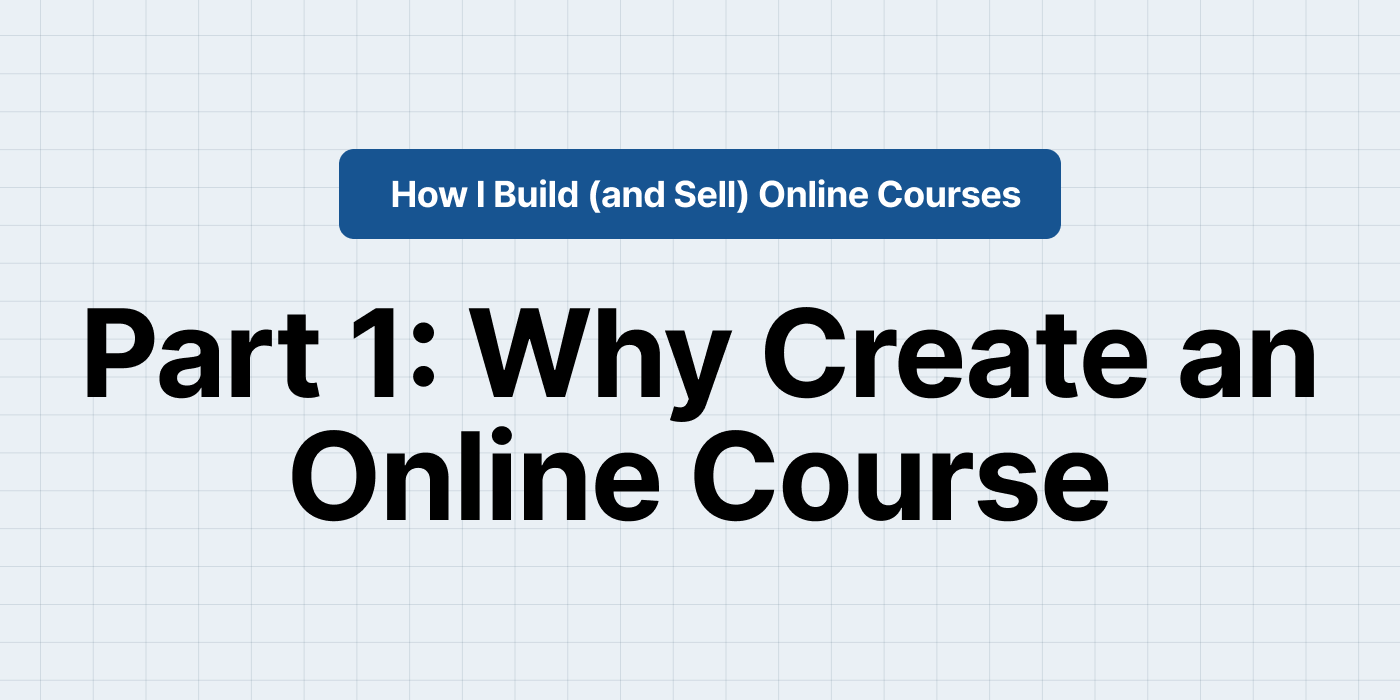Seven years ago, I got angry and started a blog.
I had just gotten out of a therapy session with a client who described how, because of a new approach to sleep I’d taught her, she had gone two weeks straight without any insomnia—something that she hadn’t experienced in over twenty years.
What’s more, this wasn’t the result of years and years of work in therapy… I’d only had three sessions with her. Which means that in under three hours, I was able to teach her a handful of techniques that had eliminated decades of insomnia—including all the stress, frustration, and anxiety that goes with it.
Of course I was happy for her. And pleased with myself. But mostly I was angry.
Angry with my own field of mental health for hoarding hundreds of techniques, insights, and frameworks like this for improving people’s emotional health and wellbeing behind the walls of therapists offices and academics labs.
In this case, we’ve known for 30+ years about an approach to overcoming insomnia called CBT-i, which is incredibly effective at eliminating insomnia—much better than the standard approach of sleep hygiene tips and medications.
But you would never know about it unless you were either part of the small minority of the population who can afford high-quality psychotherapy and happen to have the good luck to find a provider who actually knows something about CBT-i, which sadly is only a tiny fraction of mental health professionals out there.
That’s crazy!
I remember thinking to myself there’s no reason everybody with insomnia—which by some estimates is 10% of the population—shouldn’t be able to learn and put into practice the core practices of CBT-i and dramatically improve their sleep.
And insomnia is just one issue… There are insights and approaches like CBT-i in all sorts of areas of emotional health, from procrastination and anxiety to communication and self-esteem.
But they’re all “locked” up in therapist’s offices, inaccessible to the vast majority of people who could benefit from them.
Of course, some people with severe mental health struggles need the formal guidance of a trained professional. But the vast majority of people who struggle with, say, anxiety, don’t have clinical levels of anxiety. They’re still functioning fine in their life. They don’t need years of therapy. What they need is a teacher—someone who can clearly and simply explain what anxiety is, how it works, and how they can work with it in a healthier way.
And the same thing is true of low self-esteem, imposter syndrome, negative self-talk, procrastination, defensiveness, perfectionism, burnout, and dozens of other emotional health struggles we all face in life.
That’s why I was angry. And that’s why I decided to start a blog.
I wanted to teach people in a simple, accessible way how to think about and work through common emotional struggles.
Well, I started writing articles every week for my blog and newsletter and my approach seemed to resonate. I frequently heard things from my readers like:
- I’ve struggled with perfectionism for a long time but I’ve never heard anyone explain it as simply as you do.
- I’ve been working on anxiety with my therapist for years but nothing has worked as well as your scheduled worry exercise you described in last week’s newsletter.
So I kept writing and my audience kept growing… What started as a few friends and family mercifully reading my articles every week eventually grew to a few hundred, then a few thousand, and today there are over 50,000 people who read my newsletter each week.
My First Online Course
But a couple years into writing, I realized that some people wanted more than what an article could offer: they wanted to go deeper on a topic—not just to learn more about it, but to get more specific guidance and structure for how to implement the good ideas I was sharing in a sustainable way.
So, I experimented with my first online course, which I called Emotional Fitness Bootcamp. It was a three week live course where I met with a handful of students over Zoom who wanted to learn tools and practices to create a healthier relationship with their emotions.
The first cohort of the course was a success on multiple levels:
- For one thing, it validated that there were people who would actually pay me to teach them about emotional health. 30+ people were willing to pay me to be their teacher. That did and still does feel very encouraging.
- Next, I learned that I loved teaching about emotional health (even more than working with people in therapy). And I learned that I especially loved teaching live courses where I could interact with students, answer questions, work through obstacles, etc. I was hooked!
- Fortunately, my students also seemed to really find it helpful. I remember three different students independently emailing me after the course ended, all of whom used the phrase “life-changing.” Pretty gratifying to have that kind of an effect.
- Finally, I made some decent income from the course. I think that first cohort made about $3,000. On the one hand, it wasn’t much compared to my salary at the time as a therapist. On the other hand, that’s a really nice bonus income for something I was doing on the side of my full-time work (it also helped to defray the cost of running an increasingly big newsletter).
I went on to run a few more cohorts of the course over the next couple years, each time making refinements and adding or subtracting things based on my students’ feedback. Then a few years ago, I rebranded the course to its current iteration, Mood Mastery, and have continued running it each year since.
All told, I’ve had over 300 students go through the course and it now generates $20K-$30K each time I run a new cohort, which is typically once or twice a year.
Experimenting with Self-Paced Courses
More recently, I’ve started experimenting with self-paced video courses.
Admittedly, these are not quite as fun for me, because they don’t have as much of a live component. On the other hand, these self-paced courses have advantages…
- Because they take less time to run, they’re more affordable, so a bigger percentage of my audience can take advantage of them. My most recent self-paced course on anxiety, Creating Calm, is priced at $150.
- They’re also more flexible in that students can work through them at their own pace and don’t have to worry about making time to attend live sessions or deal with time zone issues.
- From my end, they balance out well with the live course because—despite a lot of time and resources that go into creating them initially—after that they don’t require nearly as much involvement on my part. I can sell them in my sleep. And the steady recurring income from these also balances out the more intermittent income from the live course.
Why Most Coaches and Therapists Should Create an Online Course
I describe all this because I want to paint a picture of what’s possible for you as a coach, therapist, or other expert…
- Building and selling an online course is a lot of work, but it’s an incredible way to share your gifts and expertise in a much more accessible and scalable way than more traditional 1:1 work.
- And for those of you who enjoy teaching at least as much as counseling or coaching, you can essentially create your own platform for doing so—teaching whatever you want in whatever format you want—rather than being confined to the more narrow structures of a traditional school.
- Finally, for those of you with a more entrepreneurial mindset, it can be a great way to make some extra income, or potentially, lay the foundation to create an entire business teaching your expertise and doing a lot of good for a lot of people.
All that’s to say, I increasingly believe that…
If you’re any kind of coach, therapist, or counselor, you should almost certainly create at least one online course.
The need for high-quality information and training in emotional health and wellbeing is enormous. And there are thousands and thousands of experts like you who have accumulated years and perhaps decades of knowledge and wisdom that could seriously help people.
But because most therapists and coaches only work 1:1 with clients—and often, only in-person—their influence is limited to the hours in the day. At most you can work with, what, 5-6 clients per day? And even then, it’s only a small subset of the population who is able to do 1:1 work.
With a course, you free up your expertise to go to work for far more people:
- People who live in rural areas and don’t have access to 1:1 work
- People who can’t afford months or years of 1:1 work
- People who are intimidated by working 1:1 with someone in person
- People who simply want education and learning rather than coaching or therapy.
You also free up your expertise to scale beyond the confines of your working hours… Once you’ve created a course, you can teach hundreds—even thousands—of people literally while you sleep!
What’s Coming Next
In the rest of this series, I’m going to detail my specific process for creating online courses.
In fact, Part 2: How to Choose a Great Idea for Your Course is available now.
But I’ll also cover topics like:
- How to Design a Curriculum for Your Course
- Tools and Technology for Building and Running a Course
- How I Think About Pricing and Selling Courses
- And lots more…
So stay tuned for those.
Want to Create an Online Course? 2 Questions to Consider First…
If you’re at least tentatively interested in building an online course, I think it’s important to do a little bit of self-reflection about your motivations for why exactly…
- For one thing, building a course takes a good amount of time, energy, and resources, so you don’t want to jump into it lightly. Would you be better off putting that time and energy into writing a book? Starting a YouTube channel? Staying focused on your 1:1 practice?
- Also, to make a course that’s genuinely helpful for your students, it’s important to think carefully about who your ideal student is, what obstacles they face, and how best you can actually help them. Fundamentally, a course is about your students, not you. So it’s important to reflect on who those students are and what they really need that you can help with.
I’ve shared my own story about why I got into this project of writing and teaching online. And while you will undoubtedly relate to and share some of them, you will also have your own distinctive reasons for creating a course.
So, plan to spend 20-30 minutes with a journal, or perhaps talking with a trusted friend, and work through your answers to these two questions:
- What do I hope to get out of building and selling an online course?
- What do I hope my students will get out of my course?
And if you’re game, throw some thoughts and/or questions in the comments and let me know what you’re thinking!
—Nick





6 Comments
Add YoursHello Nick, I have been following you for some time, in fact, so long ago that I can’t remember how I connected. I work with trauma and have found your articles to the point and very useful for clients. I simply love what you’re doing and the motivation resonates. I’ve been thinking about doing something similar and this is the perfect motivation! Thank you! Alta
Awesome! What kind of a course are you thinking about?
Nick, you’re simply the best! I love how much you are willing to share with others and not just hoarding all the goodness for yourself. I’m especially glad you didn’t only pitch this series of articles to just mental health professionals but included coaches too. Thanks again! Keep up the great work!
Thanks, Anna!
fwiw, I think most mental health professional and coaches have far more in common than they do difference—especially when it comes to teaching and sharing our work with the wider world!
I’m thrilled that you are writing about this. I’m a psychologist and have been following your writing and courses for a couple of years. I learned a lot and tried to implement in my own writing (which my boosted traffic) and really wanted to learn about these exact “behind the scenes” of your business. Maybe do a course for professionals about writing or building courses?
Maybe!
What would you want to see a course like that cover exactly?